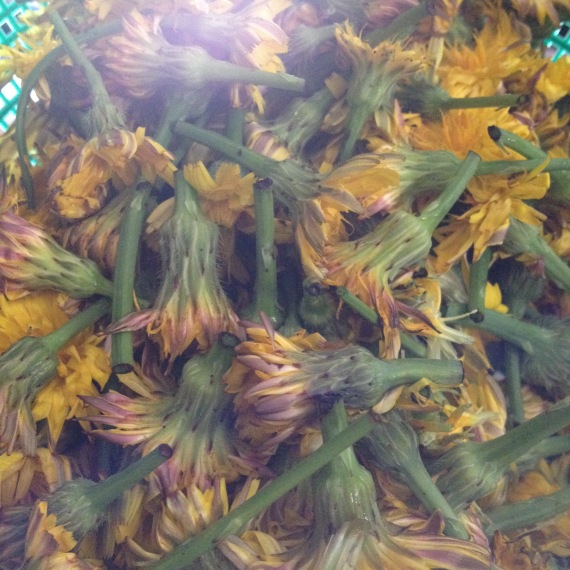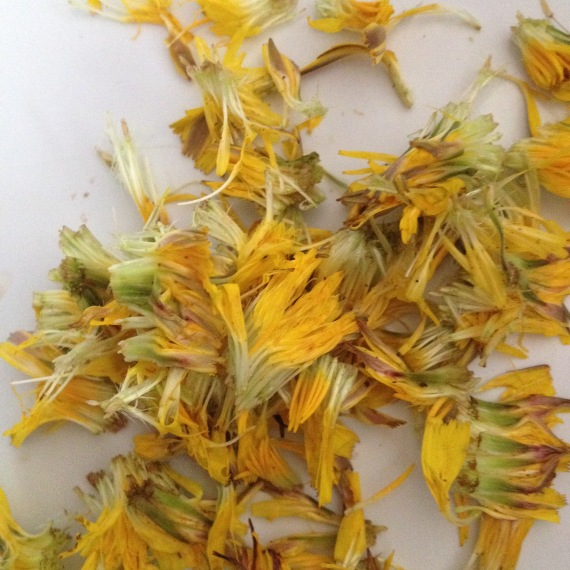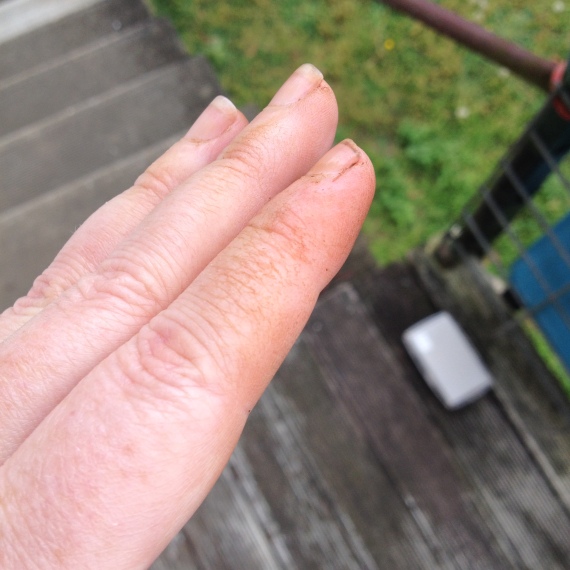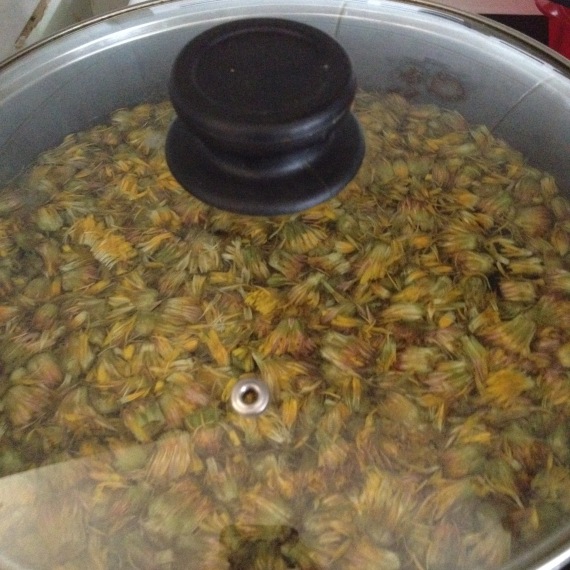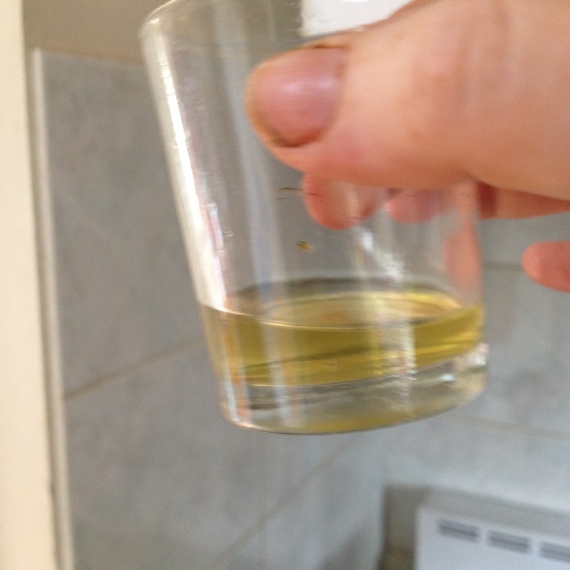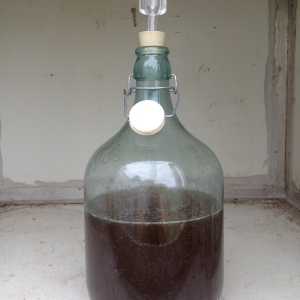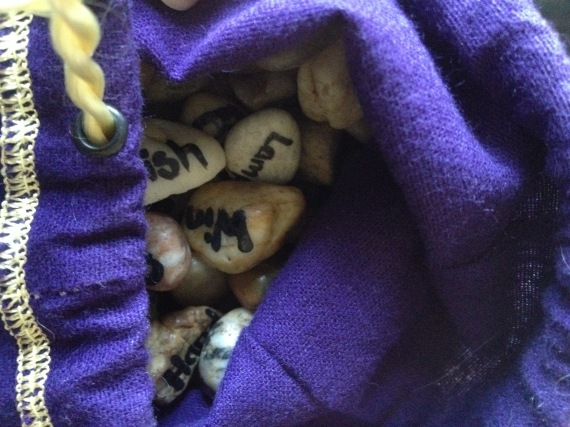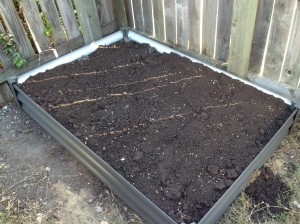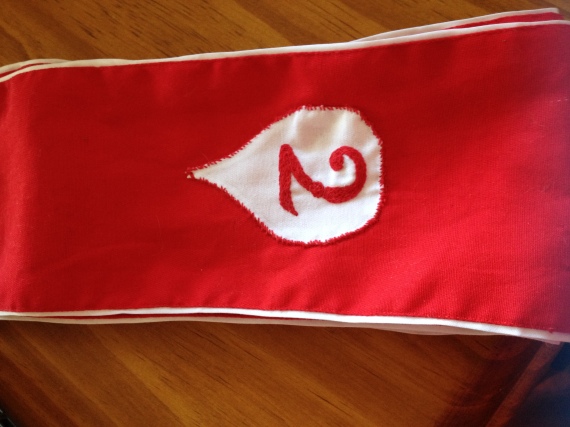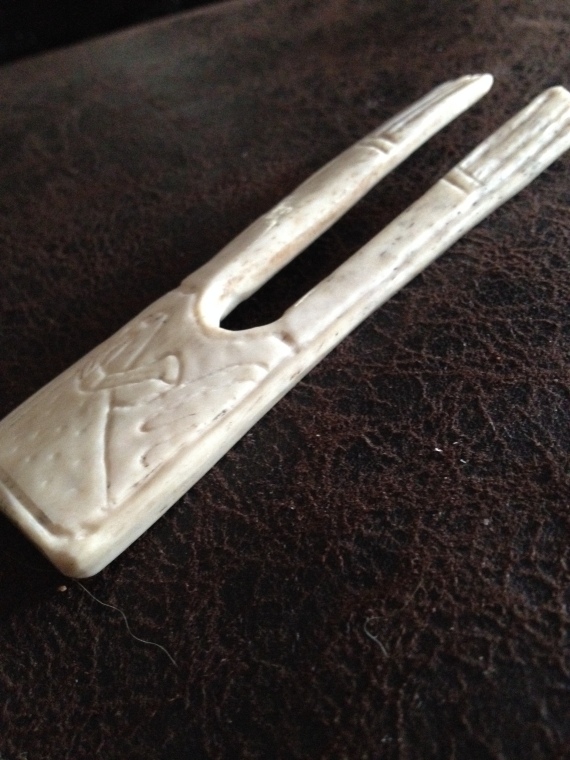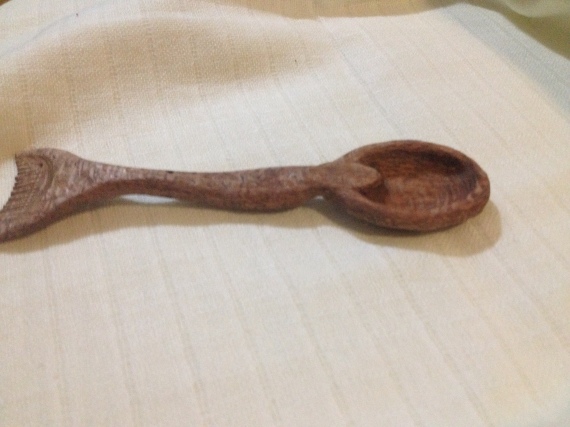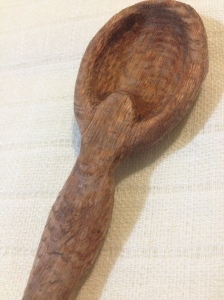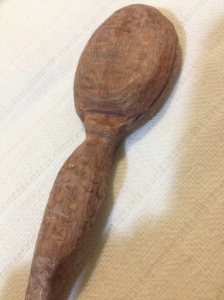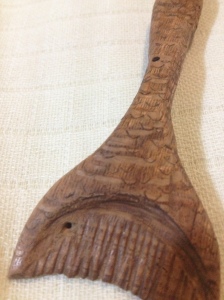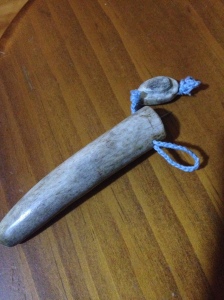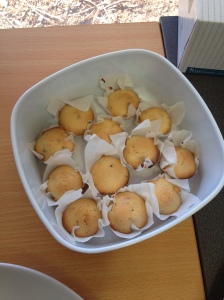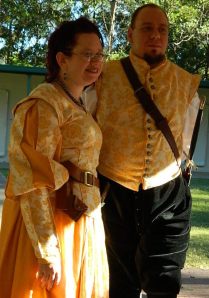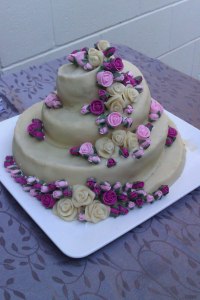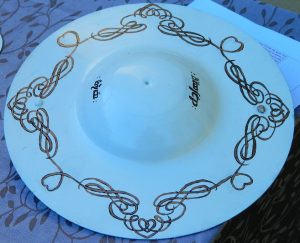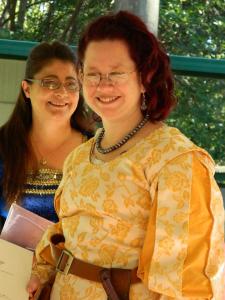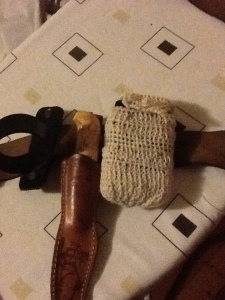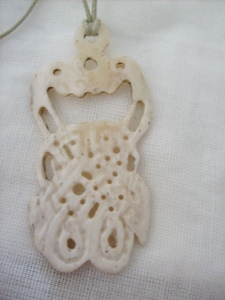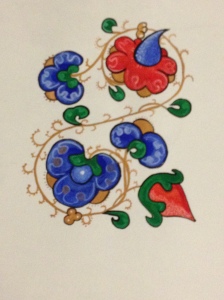Catsear Wine
In a Bradbury sort of mood, I decided last week to make some dandelion wine. All the pretty yellow flowers were nodding their head in the yard and I thought “I’m going to do something with them.”
It never really occurred to me that they weren’t actually dandelions until Friday afternoon, when browsing some dandelion related resources, I came across mention of Catsear.
Catsear (Hypochaeris radicata) looks like dandelion (Taraxacum officinale), but has some differences in appearance. The leaves look a little different, and where dandelions grow a single flower per stem, catsear branches. However, it is edible, and it’s got a lovely fragrance. Looking it up netted me this result, which suggested to me that I could still get a nifty little alcoholic beverage out of my yellow flowers.
I have no idea how many flowers I managed to harvest. It was a lot, but I don’t have any kitchen scales, so I can’t say by weight. I managed to repurpose and fill a bucket that once contained 2kg of yoghurt. I could have got more, but I’m lazy.
I then rinsed the flowers to get rid of wildlife.
Then I set to the tedious task of taking off the green bits.
I found that you can get into a nice rhythm of pinching the petals between your thumb and forefinger and simply twisting off the stem and sepals, but there were a lot to get through. I put on a movie and was halfway through it before I finished with the flowers.
Be aware that the sap stains your fingers. Hours after and following numerous attempts at scrubbing my fingers, I still look like I’ve been playing with dirt.
Having finished separating the petals out, I put them into a big pot of water and set it on to boil. I then went and checked various dandelion wine recipes and found that they suggest to put dandelions into boiling water then let it cool. Whoops.
Considering I put in approximately 3750 ml water, it took nearly an hour to come to the boil. Once there, I let it boil for about 5 min then turned it off and let it steep for 4 hours I should have left it longer, but I’m impatient, and I have visions of an irate husband complaining because I’ve left flower soup out for a long time.
I then strained out the solids, first with a metal seive to get the large bits, then with coffee filters to get the pollen and other smaller solids.
I then added a kilo of sugar into the strained liquid and put it back on to heat.
The liquid I was left with was straw yellow in colour, had a lovely, fresh aroma and tasted (to me) like a combination of wheat, grass and straw. I fed it to my unknowing stepdaughter, who looked at me suspiciously before taking a sip, then called out “Aw, hawhawhaw,” which left me wondering if she had burnt herself on the still hot liquid, then “I need to LIVE on this stuff!”
I’m now just waiting for the liquid to cool before adding yeast and putting it on to ferment. I’m hoping that delicious and delicate flavour is preserved long enough to feed to others at next year’s Great Northern War.
Edit, 25/10/2015: I didn’t get back to the brew last night, so it got covered overnight to stop the world from feasting on my delicious flower soup. This morning I put it on to warm, then put it into a 5l demijohn with a water lock. I’ve used BV7 yeast at the advice of my husband, who has played with it using apple, pear and blackberry ciders. (I was considering CL23 but was informed by him that the flavour would drop considerably). Vintner’s Harvest tells me that the ethanol will top out at about 13%, so it’s not going to run anywhere close to the “rocket fuel” that he regularly produces.
The brew has been relegated to our “brewing box” downstairs: a large insulated box we acquired a few years ago from a friend. I feel a little sad locking my brew away (I like to be able to look at the yeast moving around, and be able to see the pressure and watch the bubbles) but as we’ll have a house full today, ’tis safest.
